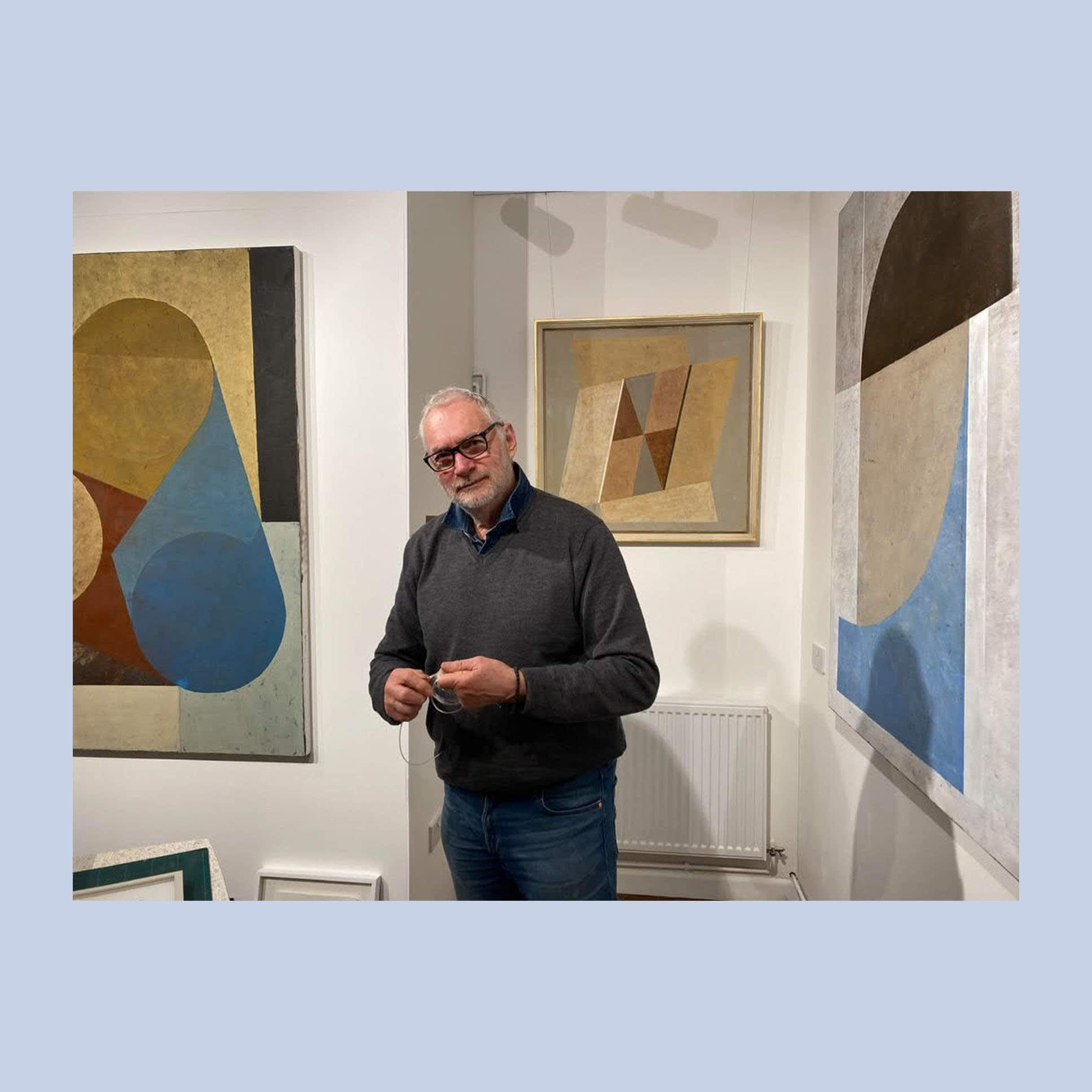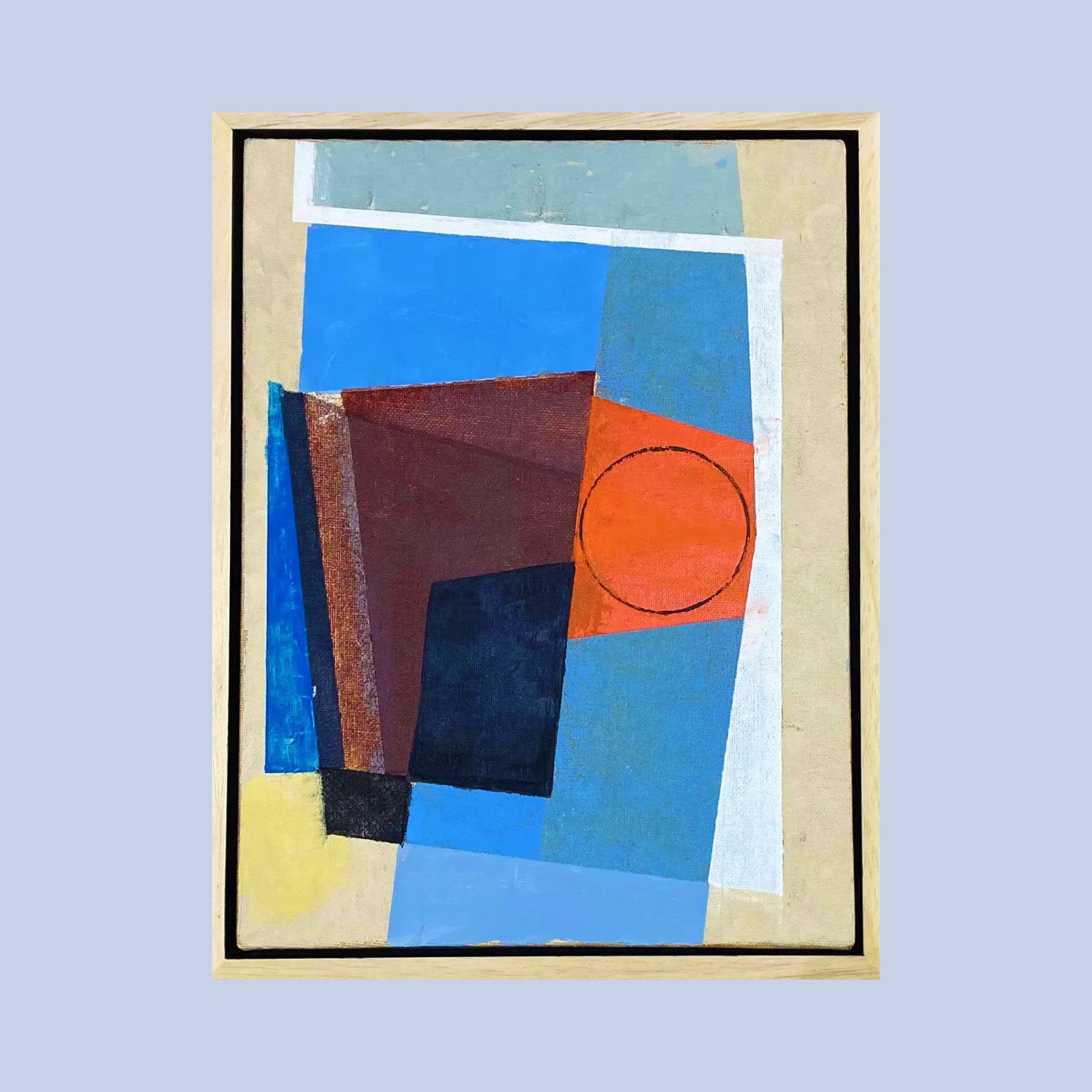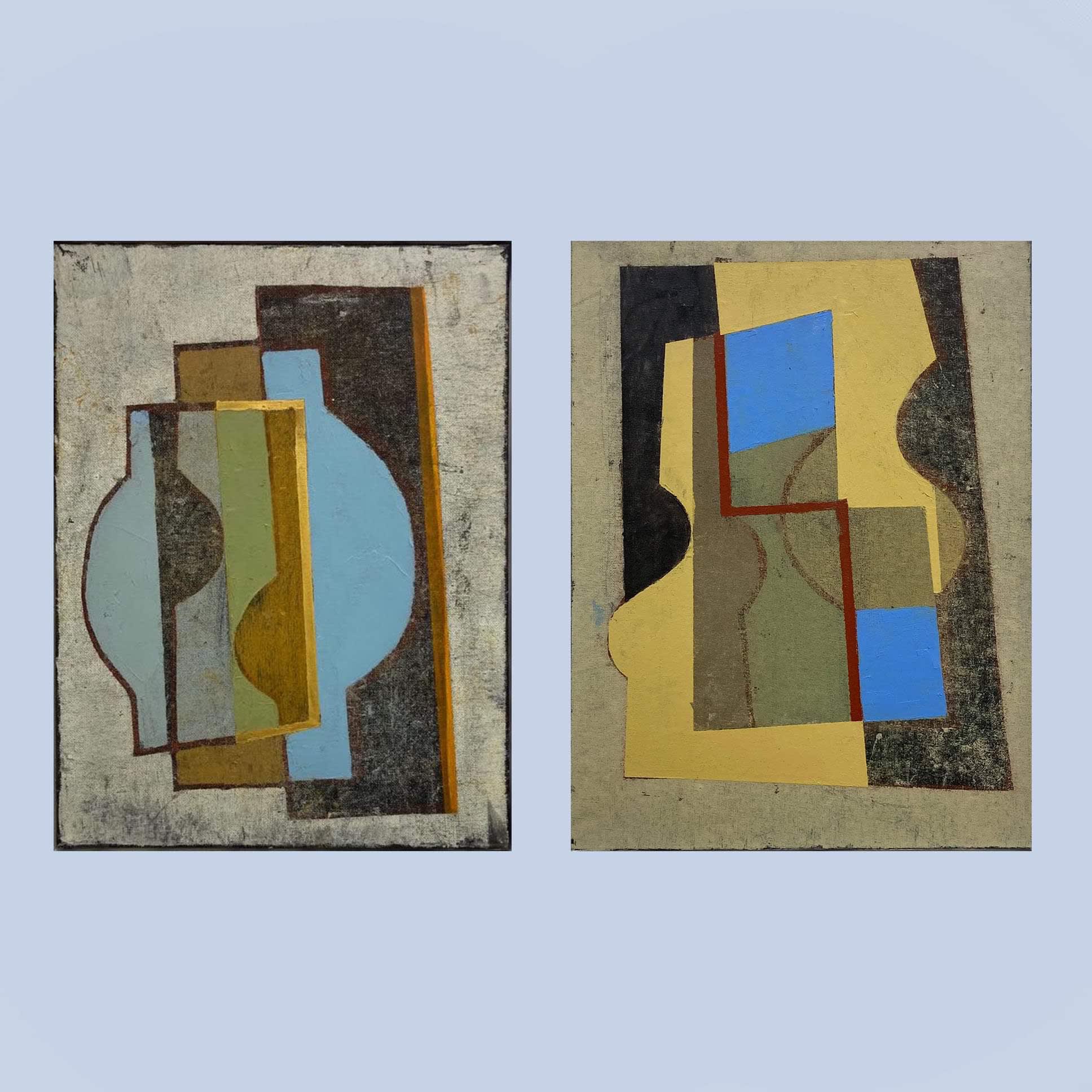
‘When I enter my studio all becomes timeless, there are no constraints. The Studio is a sanctuary a sacred space outside of time. It is in this space that I make my play in the dance of creativity. The paint the canvas and my tools the space become animated in harmony with the dance.’
Raised in Devon, artist Jeremy Annear was born into a world with creativity, culture and religion surrounding him.
This upbringing has had a clear effect on Annear, whose studio is a converted chapel located in the far-west of Cornwall. This space of devotion is clearly linked to the artists practice and echoes throughout his work, creating a pious environment where colour and form meet. The paintings with their arched blocks of colour create layered tones with contrasting glimmers of light and are reminiscent of stained-glass windows.
Annear’s abstractions denote a quiet place, a secluded moment in time. The place specific colour palette of raw browns, muted greens and pelagic blues bring the viewer back to the organic source of the work, the landscapes near his home.

The paintings are made ritualistically. The artist starts with applying earthen tones to the stretched canvas, this acts as the base for the initial drawings to begin. This drawing is an unconscious flow from mind, to hand, to canvas. Only after Annear is satisfied with this sketch does the geometric linear aspect come into play. He then applies layers of oil wet into wet focusing on how the paints interacts with one another, building the strong edges that are synonymous with Annear the artist.
Nonrepresentational art- better known as abstract art -consists of breaking down an image to its most basic elements: their form, tone, line and colour. It is almost impossible to pinpoint the birth of abstract art. We see simplification of form as early as the cave paintings in Lascaux. However, we don’t see the movement burst into the art scene until the early 1900s with artist such as Picasso and Picabia. Prior to the 20th century painting and illustration were purely exercises in representation, the artist having very little freedom to explore the limitations of their subject matter. With the birth of literary movement Romanticism, the arts began to emphasize the importance of emotion and imagination over logic.

This period shows an explosion of movements. Different schools of thought pop up such as symbolism, futurism, expressionism and cubism. We see shapes fracted and reassembled, the body of a woman is simplified down to a few angular blocks and is reborn into a brand-new being. As the definition of art changed, its subject matter changed with it. Artist began to take inspiration from different aspects of spirituality. The esoteric became the new Catholicism. Painters such as Robert Delaunay, Wassily Kandinsky and Hilma Af Klint used angular shapes and linear patterns as symbolism for their spirituality.
We see clearly the notion of spirituality through abstraction in Annear’s work. Like Hilma Af Klint, Annear depicts his inner world for us. Through his inorganic lines and layered colours, we find solace.
